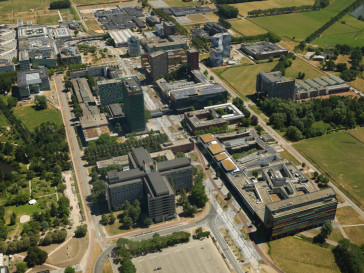Positive Energy Districts (PEDs) are a promising approach to urban energy transformation, aiming to optimize local energy systems and deliver environmental, social and economic benefits. However, their effectiveness and justification for investment rely on understanding the additional value they provide (additionality) in comparison to current policies and planning methods. The additionality perspective is not used yet in current evaluations of PED demonstrations and pilots. Therefore, this paper introduces the concept of additionality in the evaluation of PEDs, focusing on the additional benefits they bring and the circumstances under which they are most effective. We discuss the additionality of PEDs in addressing the challenges of climate neutrality and energy system transformation in three European cities that are funded by the European Commission’s H2020 Programme. It should be noted that given the ongoing status of these projects, the assessment is mainly based on preliminary results, as monitoring is still ongoing and quantitative results are not yet available. The paper discusses the drivers and barriers specific to PEDs, and highlights the challenges posed by technical complexities, financing aspects and social and legal restrictions. Conclusions are drawn regarding the concept of additionality and its implications for the wider development of PEDs as a response to the challenges of climate neutrality and energy system transformation in cities. We conclude that the additionality perspective provides valuable insights into the impact and potential of PEDs for societal goals and recommend this approach for use in the final evaluation of R&I projects involving PEDs using actual monitored data on PEDs.
DOCUMENT

To achieve the “well below 2 degrees” targets, a new ecosystem needs to be defined where citizens become more active, co-managing with relevant stakeholders, the government, and third parties. This means moving from the traditional concept of citizens-as-consumers towards energy citizenship. Positive Energy Districts (PEDs) will be the test-bed area where this transformation will take place through social, technological, and governance innovation. This paper focuses on benefits and barriers towards energy citizenships and gathers a diverse set of experiences for the definition of PEDs and Local Energy Markets from the Horizon2020 Smart Cities and Communities projects: Making City, Pocityf, and Atelier.
DOCUMENT

Positive Energy Districts (PEDs) are potential high-impact climate change mitigation actions towards low carbon or even climate neutral cities. This implies that the energy performance and greenhouse gas emissions of PEDs need to be assessed. To this end, an accounting methodology, metrics, supporting (accounting) tools, and reporting are necessary that capture the full energy and climate impact of PEDs. The European Commission's Building Energy Specification Table (BEST) provides a methodological approach for calculating the energy balance of PEDs. The BEST is a formal requirement of the European Commission's proposal process, with respect to the Horizon 2020 funding program. An improved methodology for calculating the annual energy balance of a of PED, based on the international standard ISO52000, was developed by the Making City project in 2020. In this paper, we evaluate and compare accounting methods for assessing the energy performance of PEDs and conclude on their use and shortcomings. The hypothesis to be explored is that current accounting practices are based on accounting at a building level and alternative methodologies are needed to capture the full impacts at a district level. To this end, we apply the current approaches on the ATELIER project's PED pilot in Buiksloterham, Amsterdam, which will serve as a case study to illustrate the differences in outcomes and in the use of the results in evaluation and policy making. Consequently, we reflect and recommend on improved approaches and methodologies.
DOCUMENT

The key societal problem addressed by the EmPowerED consortium is the urgent need to accelerate and scale up the development of Positive Energy Districts (PEDs). Carbon neutral heating and cooling is a core element of the design of Positive Energy Districts (PEDS). However, many Dutch heat transition projects run behind schedule and are not compatible with this future vision of PEDs, making the heat transition a key factor in PED realization and upscaling. In this heat transition and the transition to PEDs, citizen engagement and support is a key societal factor and citizens need to be an integral part of the decision-making process on the realization of PEDs. Furthermore, technical, regulatory and financial uncertainties hamper the ability of decision makers to create PED system designs that have citizen support. Such system designs require a deep understanding of the relevant social, spatial, governance, legal, financial, and technical factors, and their interactions in PED system designs.
Binnen het Europese DUT-PED kader (Driving Urban Transitions for Positive Energy Districts) zijn we PED-StepWise gestart. Het doel is een energieneutrale of energiepositieve gebied creëren via een participatief stapsgewijs plan. We gebruiken drie gebieden als living labs.

Positive Energy Districts (PEDs) can play an important part in the energy transition by providing a year-round net positive energy balance in urban areas. In creating PEDs, new challenges emerge for decision-makers in government, businesses and for the public. This proposal aims to provide replicable strategies for improving the process of creating PEDs with a particular emphasis on stakeholder engagement, and to create replicable innovative business models for flexible energy production, consumption and storage. The project will involve stakeholders from different backgrounds by collaborating with the province, municipalities, network operators, housing associations, businesses and academia to ensure covering all necessary interests and mobilise support for the PED agenda. Two demo sites are part of the consortium to implement the lessons learnt and to bring new insights from practice to the findings of the project work packages. These are 1), Zwette VI, part of the city of Leeuwarden (NL), where local electricity congestion causes delays in building homes and small industries. And 2) Aalborg East (DK), a mixed-use neighbourhood with well-established partnerships between local stakeholders, seeking to implement green energy solutions with ambitions of moving towards net-zero emissions.